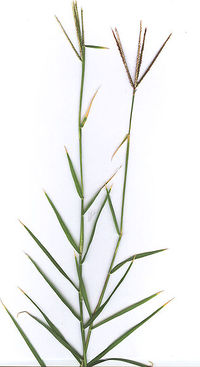Difference between revisions of "Small Intestine Impaction - Horse"
| Line 40: | Line 40: | ||
}} | }} | ||
| − | == | + | ==References== |
| + | <references /> | ||
* Mair, T.S, Divers, T.J, Ducharme, N.G (2002) '''Manual of Equine Gastroenterology''', ''WB Saunders''. | * Mair, T.S, Divers, T.J, Ducharme, N.G (2002) '''Manual of Equine Gastroenterology''', ''WB Saunders''. | ||
* Merck & Co (2008) '''The Merck Veterinary Manual (Eighth Edition)''' ''Merial'' | * Merck & Co (2008) '''The Merck Veterinary Manual (Eighth Edition)''' ''Merial'' | ||
Latest revision as of 18:28, 18 July 2012
Introduction
Small Intestinal impaction causes total or partial obstruction of the intestinal lumen resulting in colic. The obstruction is most often associated with ascarid impaction due to ascarid infection[1] in young horses, or ileal impaction due to ingestion of Bermuda grass in the USA or tapeworm infection in the UK. Ingesta and fluid builds up proximal to the impaction and does not reach the absorptive large intestine, this results in systemic volume depletion and reduced cardiac output.
Impaction may also result due to postoperative ileus; the risk can be minimised by good surgical technique, appropriate postoperative care and the administration of prokinectic drugs.
Signalment
Foals and yearlings are particularly susceptible to infection with ascarids, impaction usually occurs following the administration of an anthelmintic with a high efficacy.
Ileal impaction is more common in younger animals which are at greater risk of infection with tapeworms such as Anoplocephala perfoliata.
Clinical Signs
Clinical signs are of simple small intestine obstruction. Typically the condition starts with mild signs of colic which then progress as the condition becomes established. There will be additional signs of parasite infestation, weight loss, diarrhoea and ill thrift, in cases associated with ascarid and tapeworm infection.
The severity and speed of onset of clinical signs is determined by the level of the obstruction. Proximal obstructions will progress more rapidly than distal ones.
Passage of a stomach tube will produce nasogastric reflux depending on the site of obstruction and its duration; for a proximal obstruction fluid will build up in the stomach after approximately 3-6 hours, and for a distal obstruction, after 12 hours. Gut sounds will decrease as the small intestine becomes distended and atonic.
On rectal examination the small intestine is palpable as distended loops; in the early stages of ileal impaction a tubular structure may be felt in the mid abdomen.
Clinical signs and rectal examination will diagnose the problem to the small intestine but it may not be possible to make a definitive diagnosis until the horse is taken to surgery.
Ultrasound
Abdominal ultrasound reveals distended loops of small intestine which are frequently immotile.
Treatment
In cases of partial impaction medical treatment with laxatives, IV fluids and analgesia may be successful but surgical management is usually recommended for small intestinal impaction. A ventral midline laparotomy is carried out to gain access to the small intestine, in severe cases the impacted portion of the intestine is removed and an anastamosis performed. In mild cases the impaction may be manually reduced but the intestine must be inspected closely for viability and sections removed if they are damaged. In the case of ascarid impaction several enterotomies are usually performed.
See Medical Treatment of Colic in Horses
Prognosis
If the impaction causes complete obstruction to the small intestine then the prognosis is poor, with mortality rates of up to 92%.
| Small Intestine Impaction - Horse Learning Resources | |
|---|---|
 Search for recent publications via CAB Abstract (CABI log in required) |
Small Intestinal Obstruction in horses publications |
References
- ↑ Cribb NC, Cote NM, Bouré LP, Peregrine AS. (2006). Acute small intestinal obstruction associated with Parascaris equorum infection in young horses: 25 cases (1985-2004).. New Zealand Veterinary Journal
- Mair, T.S, Divers, T.J, Ducharme, N.G (2002) Manual of Equine Gastroenterology, WB Saunders.
- Merck & Co (2008) The Merck Veterinary Manual (Eighth Edition) Merial
| This article has been peer reviewed but is awaiting expert review. If you would like to help with this, please see more information about expert reviewing. |
Error in widget FBRecommend: unable to write file /var/www/wikivet.net/extensions/Widgets/compiled_templates/wrt693a8956ab7a23_25682840 Error in widget google+: unable to write file /var/www/wikivet.net/extensions/Widgets/compiled_templates/wrt693a8956b2fa16_81029512 Error in widget TwitterTweet: unable to write file /var/www/wikivet.net/extensions/Widgets/compiled_templates/wrt693a8956bf97c6_07685219
|
| WikiVet® Introduction - Help WikiVet - Report a Problem |
